In 2024, you might wonder if Fitbit is still relevant. Despite getting acquired by Google, Fitbit remains one of the most recognizable names in the industry. Fitbit trackers aren’t meant for the most hardcore of athletes, but they’re still excellent devices for tracking overall activity as well as monitoring certain health and wellness metrics like EKGs and blood oxygen levels.
Technology
Evidence found of volcanic moon orbiting a distant exoplanet
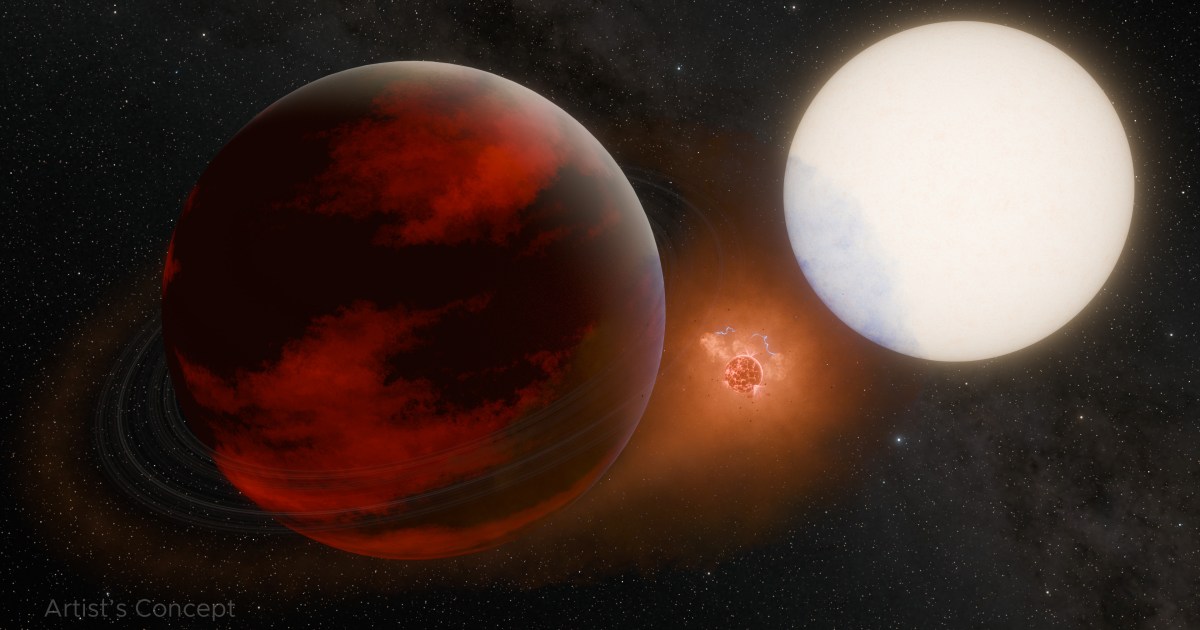

We know there are thousands of planets beyond our solar system, called exoplanets. And scientists are pretty sure that many of these planets must also host moons, called exomoons. But because moons are so tiny and dim compared to planets and stars, there has never been a confirmed discovery of an exomoon. Now, though, scientists have uncovered evidence of an exomoon, and it appears to be a hellish and volcanic place.
The possible moon is in orbit around WASP-49 b, a gas giant located over 600 light-years away that orbits its star so closely that a year there lasts just 2.8 days. The evidence for the moon comes in the form of a cloud of sodium that appears to be moving slightly differently from the planet, suggesting it could be linked to its own body.
The presence of sodium is similar to what is seen at Jupiter’s moon Io, which is covered in hundreds of volcanoes and is the most volcanically active place in the solar system. These volcanoes are constantly erupting and spewing out material including sulfur dioxide, sodium, potassium, and other gases, which can be thrown out for hundreds of miles and can form huge clouds that are bigger even than Jupiter.
When researchers used the Very Large Telescope to observe the WASP-49 system, they found a comparable-looking cloud of sulfur, which is why they think there might be a volcanic moon there.
“We think this is a really critical piece of evidence,” said lead researcher Apurva Oza of the California Institute of Technology in a statement. “The cloud is moving in the opposite direction that physics tells us it should be going if it were part of the planet’s atmosphere.”
Another piece of evidence for the existence of a moon is that while both the planet and its star do have small amounts of sodium, there isn’t enough present to explain the size of the cloud.
“The evidence is very compelling that something other than the planet and star are producing this cloud,” said fellow researcher Rosaly Lopes of NASA’s Jet Propulsion Laboratory. “Detecting an exomoon would be quite extraordinary, and because of Io, we know that a volcanic exomoon is possible.”
The dramatic nature of this moon, however, should it exist, will be its undoing. Io is heated internally due to the enormous gravitational forces of Jupiter, which is what keeps powering its volcanoes. But this exomoon is throwing out so much material and must be under such gravitational strain that the researchers think it will eventually disintegrate.
“If there really is a moon there, it will have a very destructive ending,” said Oza.
The research is published in The Astrophysical Journal Letters.
Technology
Best Fitbit fitness trackers and watches in 2024

That said, this is a transitional period from the Fitbit of old to whatever Fitbit will be in the future. 2023, in particular, was a messy year. There were multiple Fitbit server outages. I wasn’t impressed with the decision to sunset legacy community features like challenges or the fact that all Fitbit accounts will require you to log in via Google by 2025. Speaking of which, the Fitbit-to-Google account migration started last summer and is required if you buy new products like the Fitbit Charge 6 or Google Pixel Watch 3. The Fitbit app also got a new, more Google-like makeover, which didn’t go over well with many users. (Google has since made adjustments based on feedback.) And in January, much of Fitbit’s leadership, including co-founders James Park and Eric Friedman, left the company as roughly a thousand Google employees were laid off.
You can look at how Google has handled the Nest acquisition as a road map to how things are going. The Googlefication of Fitbit will continue, but there are reasons to stick with its trackers in the meantime. Fitbit trackers are relatively affordable, especially since they often go on sale. All the devices also come with a free trial to Fitbit Premium, the company’s subscription service that adds guided workouts, meditations, and access to more in-depth metrics. So far, it appears Google takes its Pixel Watch lineup seriously, too. With the Pixel Watch 2, the company has expanded extended warranty access and improved replacement options. You just have to go in with eyes wide open.
Best Fitbit smartwatch
The existence of the Pixel Watch, now in its third generation, has thrown a wrench into Fitbit’s smartwatch lineup. Technically, it’s a Google product, but Google owns Fitbit, so they’re all Google products now. Fitbit powers all of the Pixel Watch’s health and fitness features. But really, this is the smartwatch that Fitbit never could manage to build on its own.
The Pixel Watch 3 is a significant update over its predecessors. It finally feels like Google’s no longer playing catch-up to its rivals. This year, the screens are brighter, the bezels are smaller, and there’s now a 45mm size for larger wrists. The larger size doesn’t look chunky, either. Internally, the processor and health sensors are the same as last year, though the third-gen device has an ultra wideband chip that allows you to unlock Pixel phones and some BMW car models.
It’s got the same beautiful design with a circular domed display that looks way more elegant than the squircle Versa or Sense smartwatches ever did. On your wrist, it looks like a watch, not a tracker dressed up as one. The display is a bit fragile for our taste, but as of last year, you can get a Preferred Care extended warranty in the US and Canada. This is one reason we recommend the Pixel Watch 3 over the original since at least you have a more affordable fallback should something happen to your display. Google also announced an option where you can skip customer support and mail in broken, out-of-warranty Pixel Watch devices for discounted replacements.
As for fitness features, the Pixel Watch 3 is much better for runners than it used to be. It includes a new running dashboard, advanced form analytics, custom running workouts, and even AI-generated workout suggestions. It’s also introduced a new metric called Cardio Load, which measures the intensity of your workouts and suggests a target based on your fitness goals. It’s conceptually similar to Garmin’s Training Load. The Daily Readiness Score has also been revamped and is no longer locked behind the Fitbit Premium paywall. On the health front, European users now have Loss of Pulse. If the watch detects you’ve lost your pulse, it’ll call emergency services on your behalf. The feature isn’t available yet in the US, though, as FDA clearance is still pending.
Additionally, Google has strengthened the watch’s integrations with its own services as well as other Pixel devices. For instance, you have offline Google Maps and a Google Home Tile. You can view your Nest Doorbell camera feed or control your Google TV from your wrist, and there’s also the option to record audio with the Recorder app and transfer it to your phone. With Call Assist, you can use your watch to tell anyone calling you need an extra second to pick up the phone.
If all you want is a fitness tracker that looks like a smartwatch, you can consider the $229 Versa 4 since it’s the more budget-friendly option. But there’s no real point in the Sense 2 since the Pixel Watch 3 can do all the same things — and more.
Best budget Fitbit
The Inspire line hasn’t always felt, well, inspired. But the $99.95 Inspire 3 is different. With a color OLED display, it’s reminiscent of the Fitbit Luxe (formerly $149.95, now often around $99.99), just with a matte black plastic case instead of a metal one. It’s a great throwback to classic Fitbits for people who only want the basics.
The Inspire 3 doesn’t overcomplicate things. It’s a fitness band. You won’t get built-in GPS, contactless payments, or digital assistants. Still, what it lacks in smarts it makes up for with Fitbit’s advanced sleep tracking, stress management features, and irregular heart rate notifications. The OLED display is also a step up from the Inspire 2’s monochrome screen, and you still get 10 days of battery life. (Though it’s more like two to three if you enable the always-on display.)
The Inspire 3 has a variety of accessories, including a clip attachment if you want to discreetly track steps. There’s even a gold or silver mesh strap if you want to dress it up a bit.
To be honest, the Inspire 3 and Luxe are quite similar, and they’re often around the same price. It’ll boil down to whether you think the Luxe’s nicer case is worth trading half the battery life for — the Luxe gets an estimated five days instead of 10.
Best Fitbit fitness tracker
The Charge series has always been popular, and the $159.95 Charge 6 is no exception. It’s Fitbit’s higher-end fitness band but easily competes with the more expensive Versa 4 on features. It features a color OLED screen plus an EKG and EDA sensor. You also get built-in GPS, NFC payments, and SpO2 sensors — the only thing you’re really missing is a digital assistant.
The only qualm we have with the Charge 6 is the always-on display. While it’s beautiful, it’s a major battery drain. The Charge 6 has an estimated seven days of battery life, but that dwindles down to about two if you have the always-on display enabled. This is the same issue that we had with the Charge 5, but it’s fairly typical from Fitbit trackers these days.
Altogether, though, you’re getting a hell of a lot for the price. It’s the only FDA-cleared EKG wearable you can find for under $200, and the only other Fitbits capable of EKG and EDA readings are the Sense, Sense 2, and the Pixel Watch 2. So unless you’re dead set on the smartwatch form factor, the Charge 6 is the better overall deal.
Compared to its predecessor, the Charge 6 also adds an improved heart rate algorithm, Bluetooth compatibility with some gym equipment, and a few apps — namely Google Maps, Google Wallet, and YouTube Music. While YouTube Music works well, I’m not stoked that it requires an additional $11 monthly subscription. That said, it’s better than nothing, as Fitbit discontinued onboard music a while back.
In terms of hardware, the Charge 6 also features a haptic button instead of an inductive groove. It’s not a physical button, which is a little disappointing, but it’s more reliable thus far than the inductive groove, so I would count this as a net positive.
You could technically get the Charge 5 at a discount. However, I’d only do that if it’s significantly cheaper and price is your main consideration. The haptic button, while not what I wanted, is far better than the inductive groove and you have more app options. Turn-by-turn navigation is also handy for walks, and it at least offers some form of music playback.
Best Fitbit for kids
That pretty much covers the current Fitbit lineup. The only one we haven’t touched thus far — and the only one that I haven’t tested myself — is the $79.95 Ace 3. That’s Fitbit’s tracker for kids. It’s a basic tracker with a rugged bumper and comes with parental controls. It’s got better battery life than its predecessor but doesn’t come with GPS. Also, while it does have heart rate sensors, it’s not a metric that’s actively tracked for children. Instead, it determines how many “active minutes” they’re getting. Overall, it’s a decent choice for parents whose main priority is making sure their kids get enough daily exercise.
However, Fitbit recently announced the $229.95 Ace LTE. It’s substantially more expensive, but that’s understandable given it’s a significant upgrade in terms of hardware and software. For starters, it has the same guts as the Pixel Watch 2. (The chargers are also compatible!) It also adds built-in LTE for a $9.99 monthly subscription via the Ace Pass, which enables calling, messaging, and real-time GPS tracking for parents. Kids won’t need to have their own smartphone to set it up, and there are no third-party apps or ads on the device. Everything is also controlled via the separate Fitbit Ace app, which works on both iOS and Android.
To encourage more activity, the Ace LTE uses a series of 3D games. After playing a bit, they’re encouraged to get some physical activity to unlock more playing time. There’s also a Tamagotchi-like element, but aside from $35 collectible bands, there are no microtransactions within the games involving real money. (Kids can “buy” more items by completing daily quests and partaking in activities.) As for privacy, Google says that only parents will be able to view location and activity data for children. Location data is deleted after 24 hours, while activity data is deleted after 35 days. We haven’t had a chance to fully test the Ace LTE yet, but stay tuned for our forthcoming review.
Should you even buy a Fitbit right now?
Fitbit officially became part of Google in 2021. Nothing changed overnight, but technically, it’s Fitbit by Google now. The Fitbit-to-Google migration started in earnest in summer 2023 and new users will be asked to log into Fitbit using their Google accounts. In 2025, this will be mandatory for everyone. Last year, Google angered longtime Fitbit users by shuttering longtime social features like Challenges and removing step streaks. (Step streaks have since been added back and expanded to Android.) Meanwhile, the Versa 4 and Sense 2 weren’t as feature-rich at launch compared to their predecessors, leading some to feel that Google purposefully did this to put the spotlight on its Pixel Watch. There were also multiple major server outages in 2023.
There’s some tension here and the future of Fitbit hardware is murky. Especially given the fact that Google laid off about a thousand employees from its hardware departments spanning Pixel, Fitbit, and Nest. If you’re buying a tracker for the first time and want it to last you a while, it might make more sense to opt for a Garmin or Amazfit tracker. Similarly, if you’re looking to upgrade to an older Versa or Sense smartwatch, you might want to see where the dust settles. However, if you know you want a Fitbit, then go ahead. If you’re not in a rush or are undecided, now is not a bad time to sit back and observe.
Update, October 22nd: Adjusted pricing and availability.
Technology
Kevin Bacon, Julianne Moore, Thom Yorke, and 10K+ creators sign warning against AI use of their work


More than 10,000 professional actors, musicians, writers, and other creators have signed a petition urging against AI using their work without permission for training. British composer Ed Newton-Rex wrote the statement and set up the signature collection. The ranks of signers include many famous names. They range from Hollywood stars like Kevin Bacon and Julianne Moore to record-selling musicians and composers like Thom Yorke of Radiohead and Abba’s Björn Ulvaeus and best-selling authors Harlan Coben and Ted Chiang. The statement itself is brief and to the point:
“The unlicensed use of creative works for training generative AI is a major, unjust threat to the livelihoods of the people behind those works, and must not be permitted.”
Essentially, the signers are anxious that their copyrighted works are contributing without their permission to the enormous amounts of data used to train generative AI models behind ChatGPT, Gemini, Meta AI, and so many other text, image, audio, and video creation tools. They claim that it violates various intellectual property laws and regulations.
Along with individual celebrities, the statement has garnered the approval of many organizations in the creative space. SAG-AFTRA, the American Federation of Musicians, Universal Music Group, and the International Publishers Association are just a few who signed in support.
There’s an issue of compensation as well. For instance, Meta wrote hefty paychecks to celebrities for permission to use their voices with its new Meta AI assistant. Without that, these complaints cause issues, like when OpenAI was accused of mimicking Scarlett Johansson’s voice for ChatGPT in imitation of the movie Her.
Newton-Rex knows the AI space well, having formerly worked on generative AI audio models at Stability AI. He has claimed he left partly because he believed Stability AI went too far in leaning on the fair use doctrine for training its models. He now runs Fairly Trained, which describes itself as a “non-profit certifying generative AI companies for fairer training data practices.”
Today we’re publishing a statement on AI training, signed by 10,000+ creators already:“The unlicensed use of creative works for training generative AI is a major, unjust threat to the livelihoods of the people behind those works, and must not be permitted.”Signatories include… pic.twitter.com/AqVaEThMs4October 22, 2024
AI pushback
This is far from the first such lawsuit. OpenAI alone has multiple pending cases from writers who claim ChatGPT infringed on their work, while Suno, Udio, and other AI music creators are dealing with lawsuits from the Recording Industry Association of America (RIAA) and major music labels. The complaints, legal and otherwise, are growing as the AI tools they rail against explode in popularity. They are a facet of the bigger ethical and regulatory questions currently unanswered around AI models and their training data.
You probably won’t notice any impact on AI tools in the short term, but the signers clearly hope to push the debate over ethical AI training to the forefront and shape the ultimate form of regulations and laws surrounding the practice. It won’t do much on its own, but in tandem with the resolution of legal challenges and new regulations, it could be a factor in how AI companies design and build their models in the years ahead or whether the current system of creative work compensation looks anything like it does today.
You might also like…
Technology
Why SPADEX is crucial to India’s growing space ambitions- The Week
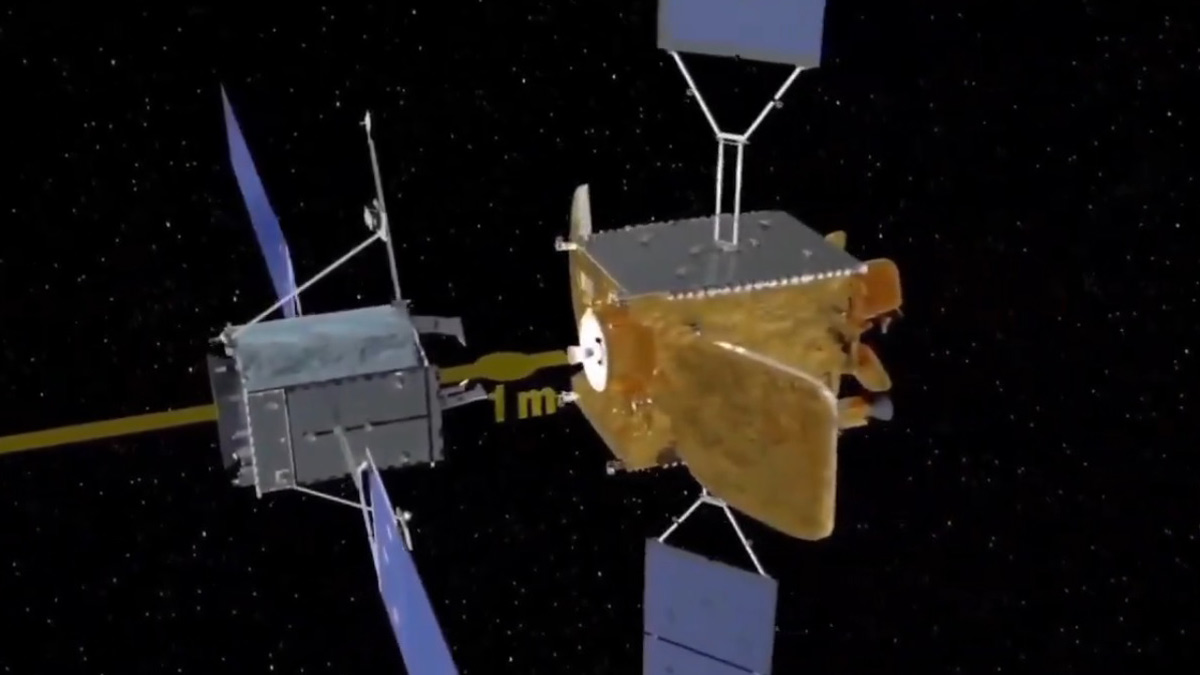
SPADEX (Space Docking Experiment) is one of ISRO’s most significant steps towards developing autonomous docking technology, crucial for India’s growing space ambitions. Docking systems allow two spacecraft to connect in orbit, enabling critical operations like assembling space stations, refueling, or transferring astronauts and cargo. SPADEX is key to achieving India’s long-term space exploration goals, including manned spaceflight, satellite maintenance, and future space station construction.
The mission involves two vehicles—‘Chaser’ and the ‘Target’—coming together and connecting in space. It will also test how well the combined spacecraft maintains stability and control after docking, ensuring smooth operations for future missions.
Once docked, the two spacecraft will later separate to perform additional tasks. This experiment is crucial for ISRO to develop the skills needed for advanced missions, such as human spaceflight and lunar sample returns. Mastering these docking and rendezvous techniques is essential for the success of such ambitious operations.
Hyderabad-headquartered Ananth Technologies, an aerospace and defence company, successfully completed the satellite integration project for ISRO. This also marks a private player joining the SPADEX Mission. Ananth Technologies Private Limited (ATL) successfully assembled two 400 kg satellites for ISRO and delivered them to the UR Rao Satellite Centre (URSC) in Bengaluru. This centre is responsible for designing and developing satellites for various space missions. “We have been manufacturing electronic subsystems for ISRO since 2000 and have been an integral part of every Indian space programme over the last two decades,” Subba Rao Pavuluri, chairman of ATL, said.
ALSO READ: Why ISRO’s involvement in ESA’s PROBA-3 mission is a milestone
ISRO usually builds its satellites at the URSC. However, for the first time, the complete assembly, integration and testing of satellites have been handled by an Indian private company at a private facility. This change is possible thanks to the recent space sector reforms, which provide more opportunities for private companies to participate in India’s space missions. Since the satellites have arrived at the URSC, they will soon be transported by truck to the Indian Spaceport in Sriharikota. There, they will undergo further testing, be fuelled, and be prepared for launch in the coming months.
“Docking plays a vital role in managing space stations and undertaking complex space projects. Astronauts travelling to a space station depend on precise docking to connect their spacecraft safely, allowing them to transfer smoothly between vehicles. This process ensures a secure journey and helps complete missions successfully, whether the astronauts remain in space or return to Earth,” remarked space expert Girish Linganna.
He said when two satellites approach each other at speeds of around 8 kilometres per second, they must coordinate carefully to avoid a collision. Using cameras or lasers, the lead satellite slows down to allow the trailing one to catch up smoothly. Once aligned, the two satellites connect to form a larger system. These precise connections enable more complex operations and allow multiple components to function together, expanding what can be achieved in space beyond the limits of a single satellite.
“In addition to supporting human spaceflight, docking is critical for constructing larger space structures. By connecting different spacecraft and modules, docking makes it possible to build advanced facilities in orbit and expand space exploration. Without these techniques, large-scale space projects would not be feasible,” added Linganna.
READ MORE: Ananth Technologies successfully completes satellite integration project for ISRO
ISRO has acquired two satellites, each weighing 400 kg, for a SPADEX mission. In this mission, a single rocket will launch both satellites into space, placing them in slightly different orbits. This setup is essential to test how well the satellites can approach, align and dock with each other in orbit, demonstrating key technologies for future missions.
The two satellites, travelling at about 28,000 km/h (or around 8 km per second), will carefully align with each other to perform a ‘space handshake’, where they will connect and attach mechanically, becoming a single unit in orbit. This experiment is important because mastering docking is essential for future missions, such as Chandrayaan-4 and India’s proposed Bharatiya Antariksha Space Station.
The history of docking systems dates back to the Cold War when the Soviet Union achieved the first successful docking in space. On October 30, 1967, the Soviets completed the historic docking of Kosmos 186 and *Kosmos 188—the first fully automated docking between two unmanned spacecraft. This paved the way for later space exploration efforts, including long-term stays aboard space stations. The United States followed this with the Apollo-Soyuz Test Project in 1975, which was the first international docking between NASA and the Soviet space agency, marking a new era of cooperation despite ongoing geopolitical tensions.
Docking technology has evolved considerably since then. Early systems required significant manual input from astronauts, but advances in automation have changed this dramatically. Russia’s Soyuz and Progress spacecraft, which service the ISS, have highly reliable automated docking systems. NASA’s Commercial Crew Program, which relies on spacecraft like SpaceX’s Crew Dragon, also uses automated systems, often with the International Docking System Standard (IDSS) for compatibility across different space missions. China, too, has developed its Tianzhou cargo spacecraft, which docks autonomously with the Tiangong space station, showcasing its growing sophistication in space operations.
“India’s SPADEX experiment is unique because it focuses on developing indigenous, scalable, and cost-effective docking technology. This experiment involves two spacecraft docking autonomously in orbit, demonstrating precision, navigation, and control capabilities critical for future missions. SPADEX is designed to serve a wide range of spacecraft sizes and mission objectives, including potential collaborations for building space stations or deep space exploration,” remarked Srimathy Kesan, founder and CEO of Space Kidz India, which is into design, fabrication and launch of small satellites, spacecraft and ground systems.
India is advancing in space exploration at an accelerated pace. ISRO’s recent successes, such as the Chandrayaan-3 mission, which made a soft landing on the Moon’s south pole, and the launch of Aditya-L1 to study the Sun, demonstrate the agency’s capabilities. “SPADEX aligns with these achievements, reinforcing ISRO’s long-term vision for space exploration, especially as the Gaganyaan mission approaches. Gaganyaan, India’s first manned mission scheduled for 2025, will require docking technology to ensure safe crew transfer and module operations. SPADEX is integral to this, as autonomous docking will be essential for future crewed missions, satellite servicing, and space station operations,” said Kesan.
Technology
Horizon developers are “done” with Killzone
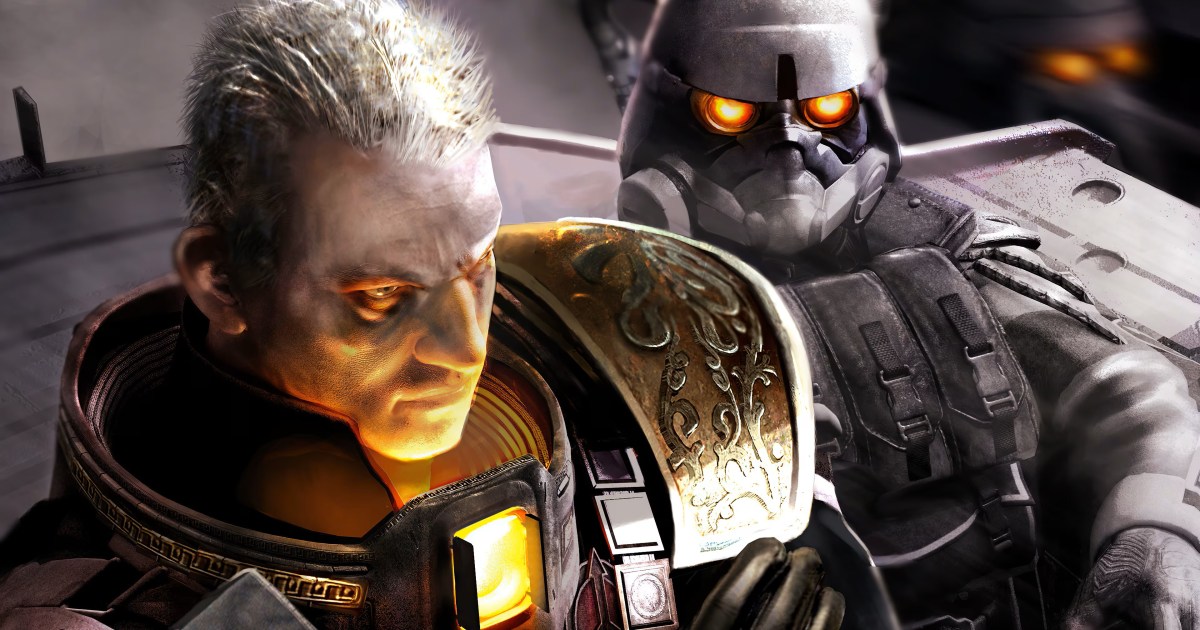

Guerrilla Games has been working on the Horizon series for years, and it shows no signs of slowing down, which is bad news for fans of Killzone, its initial franchise. In a new interview, a Guerrilla developer said the studio was “done” with the hyper-dark shooter series when it pivoted to making Horizon Zero Dawn.
“We were done with it as a team. As a studio, we needed to refresh the palette. It was, by choice, the opposite of Killzone,” art director Roy Postma told The Washington Post.
Guerrilla Games officially began making games in 2003, and its first big hit was Killzone, a dystopian sci-fi first-person shooter. It went on to make five Killzone games in total, with four developed after Sony purchased the developer. However, when it pivoted to making Horizon, it left Killzone behind, capping off the series with Killzone: Shadow Fall in 2013.
There haven’t been many mentions of Killzone from publisher Sony Interactive Entertainment, either. There were three Killzone cameos in Astro Bot, which pulled characters from all of PlayStation history, but that’s about it. Servers for Killzone: Mercenary on PlayStation Vita were shut down in 2020.
The studio didn’t go too much lighter in tone with Horizon Zero Dawn, but it’s going down the family-friendly route with its next release, Lego Horizon Adventures, on November 14. It’s a retelling of Horizon Zero Dawn, but with blocky characters, a more playful sense of humor, and simplified gameplay. In a preview at Summer Game Fest, we found it had a “childlike charm” that can help parents share the series with their kids. The team is also releasing Horizon Zero Dawn Remastered on October 31. Recent reports also claim that Guerrilla is working on “Horizon online” ahead of a third mainline game.
Don’t expect any Killzone news from Guerrilla, but who knows, maybe with the recent trend of remasters and remakes (Legacy of Kain: Soul Reaver 1 & 2 Remastered is coming to consoles on December 10, as one example), we can see something from another studio.
Technology
Audeze’s Maxwell gaming headset comes in a spicy new color
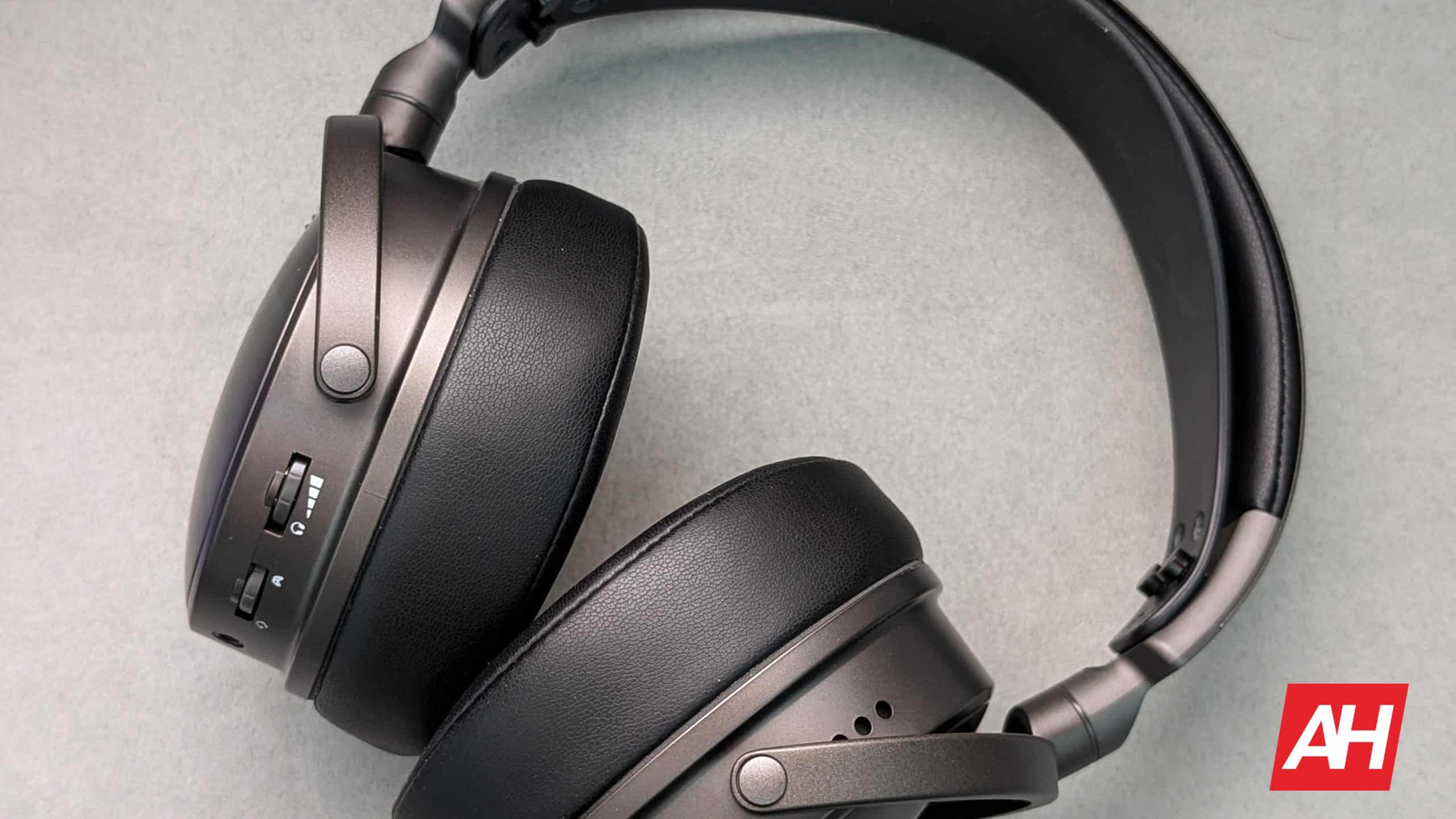
Audeze has announced a new version of its Maxwell wireless gaming headset with the Wasabi Edition. It’s a “spicy” new flavor that as the name suggests, displays brilliant green and yellow hues that shift when looking at the headset from different angles.
The Audeze Maxwell is one of the top gaming headsets on the market, and it’s become one of our favorites after having tested it over the last several weeks. The headset normally comes in one color outside of these limited edition variants. A sleek gunmetal gray with a matte finish. The Wasabi Edition comes in a glossy finish for a more eye-catching look, especially with how bright the colors are.
The iridescent green/yellow design, while new, follows the same style as Audeze’s previous limited edition Maxwell headset that came in Ultraviolet. Much like that headset that came out last year, the Wasabi Edition is only available in limited quantities. It was released today, and Audeze still appears to have stock available too. The fact that it’s limited though likely means the stock won’t be available for too long. You are paying a little bit of a premium for this model as opposed to the standard color as well. However, the price increase isn’t drastic.
The Maxwell Wasabi Edition retails for $329, whereas the standard model is $299. So you’re only looking at $30 more.
The Audeze Maxwell Wasabi Edition is compatible with Xbox, PC, and mobile
It’s important to point this out since the headset lists Xbox, PC, and mobile as the only compatible platforms. However, the Wasabi Edition should work just fine with PS5. Several users with the standard Xbox model have claimed that it works on PS5 and there’s no reason it shouldn’t. After all, it uses a USB-C low-latency adapter for the connection. So all you need to do is plug that in. That being said, the Wasabi Edition was designed in partnership with Microsoft for Xbox.
All that really means is that it’s part of Microsoft’s Shimmer campaign for officially licensed Xbox accessories. And that it can take advantage of the Dolby Atmos spatial audio that Xbox offers.
There are no differences between this and the standard edition
Other than the color, of course. Outside of the color though the headset is completely the same. Audeze has confirmed this. So if you don’t care for the green and yellow iridescent color, you aren’t missing out on any features. With that said, the Wasabi Edition gets the same great ANC and immersive audio capabilities as the other models. The detachable mic is the same as well. So, it may look different, but it will sound just as good as the other Maxwell versions. No worse, no better.
It is more flashy, and that makes it perfect for anyone who enjoys a little color with their gaming peripherals. You can only buy this directly from Audeze while supplies last.
Technology
Reltio update delivers new AI-powered matching capabilities

The latest Reltio platform update advances the vendor’s AI capabilities beyond natural language processing to include its core data unification capabilities.
Like many data management and analytics vendors, Reltio developed an AI-powered assistant that enables users to work with their data using natural language rather than code. Reltio Intelligent Assistant was included in an early 2024 platform update and is similar to tools from peers such as Informatica.
Reltio’s new update, launched on Oct. 21, includes the general availability of FERN, which is an acronym for Flexible Entity Resolution Networks. FERN is an AI-powered data matching engine built using pre-trained large language models (LLMs) and is designed to enable users to match customer data so they can develop a more complete view of each customer.
In addition to FERN, Reltio’s platform update is highlighted by new automated customer segmentation capabilities in Customer 360 Data Product, which is Reltio’s AI-powered platform for customer data.
With its focus on AI and automation to reduce time-consuming tasks and make users more efficient, Reltio’s update is significant for customers, according to Doug Henschen, an analyst at Constellation Research.
“Reltio is pushing AI innovation in this release with both dynamic segmentation and the FERN customer data matching engine,” he said. “In both cases it’s using AI to be more responsive to changing business conditions while also augmenting humans by eliminating tedious manual work steps.”
Based in Redwood City, Calif., Reltio is a master data management vendor whose platform is geared toward helping customer unify their data. In addition to Informatica, competitors include specialists such as Semarchy and Stibo Systems as well as more broad-based vendors including Boomi, SAP and Tibco.
In June, the vendor’s platform update included prebuilt master data management capabilities with industry-specific tools and, like its October update, features aiming to improve segmentation. More recently, in August, Reltio unveiled an integration with Collibra designed to help joint customers better discover and govern data assets across different organizational domains.
Platform update
Data from a single customer can be difficult to match to develop a complete profile and tailor sales and marketing efforts to best appeal to that customer.
With customers sometimes having multiple accounts, sometimes using a middle initial or abbreviating a street address but not doing so other times, and multiple members of a household with accounts, , it can be close to impossible to discover all data about a single customer considering that enterprises collect billions of data points.
Matching data is therefore onerous for humans, a painstaking process that consumes copious a lot of time. And given how difficult it can be to match data, even after hours of effort, customer profiles could be missing plenty of potentially valuable data. Even rule-based matching that automates customer profiling misses data that could be used to better inform personalized marketing efforts.
FERN is designed to solve customer matching problems, saving potentially hundreds of hours of work and improving matching accuracy.
The new Reltio tool is prebuilt, meaning no model training is required on the part of the user, and uses LLMs and machine learning-based matching capabilities that discover, define and configure customer data so it can be integrated to form a complete customer view.
In addition to FERN, Reltio’s update features improved AI-powered audience segmentation capabilities in Reltio Customer 360 including segments that evolve based on customer behaviors and needs such as purchases, claims and call center interactions. The segmentation capabilities are aimed at enabling users to better develop audience segments that improve customer experience, retention and growth.
“Dynamic segmentation and the FERN customer data matching engine both stand out,” Henschen said. “In both cases what’s promised is faster, better results.”
Beyond the AI-powered capabilities, Reltio’s update addresses data security and data governance.
The new security features are aimed at strengthening security for core enterprise data. Reltio already offer single sign on and client-credential verification. Now, it is adding multi-factor authentication. Regarding data governance, a new integration with Microsoft Purview Data Governance is designed to simplify discovery of trusted data assets for reuse and help organizations develop data products that can be shared across the enterprise to inform decisions and actions.
Regarding the impetus for developing the new features in Reltio’s latest update, Venki Subramanian, the vendor’s senior vice president of product management, said it came from a mix of customer feedback and observing market trends.
For example, FERN resulted from Reltio’s own observations about the power of LLMs and the growing need for tools that improve efficiency while the integration with Microsoft Purview Data Governance — and recent integration with Collibra — was driven by conversations with customers.
“Ultimately, our mission is continually innovating and providing capabilities that help our customers stay ahead of the curve,” Subramanian said.
Looking ahead
With Reltio’s latest update now available, the vendor plans to continue focusing on the combination of data unification and AI by adding capabilities that enable customers to build their own AI-powered features fueled by trusted, unified data, according to Subramanian.
In addition, akin to its integrations with data governance platforms, the vendor’s roadmap includes adding more integrations that enable its users to develop a data management and analytics ecosystem with Reltio at its core, Subramanian continued.
“Our focus remains on delivering a high-performance, enterprise-grade platform that supports all business-critical operations,” he said.
Henschen, meanwhile, said that Reltio’s recent focus on delivering AI-powered capabilities has given it a competitive advantage over some of its peers — at least in the present, given the pace of AI innovation and how quickly vendors are now pumping out AI-powered capabilities.
With not only FERN and Customer 360 Data Product but also Reltio Intelligent Assistant, the vendor has launched tools that use AI to make its users more efficient and potentially more profitable. And it’s doing so at a pace faster than competitors such as Informatica that have a broader data management focus and thus tend not to innovate as quickly in niches such as master data management and customer 360 specialists, according to Henschen.
“I see Reltio as a master data management-focused innovator,” he said. “There are other innovative MDM-focused vendors … but with these announcements, Reltio seems to be raising the bar — for now at least — on AI innovation.”
Eric Avidon is a senior news writer for TechTarget Editorial and a journalist with more than 25 years of experience. He covers analytics and data management.
-

 Science & Environment1 month ago
Science & Environment1 month agoHyperelastic gel is one of the stretchiest materials known to science
-

 Technology4 weeks ago
Technology4 weeks agoIs sharing your smartphone PIN part of a healthy relationship?
-

 Science & Environment1 month ago
Science & Environment1 month ago‘Running of the bulls’ festival crowds move like charged particles
-

 Science & Environment1 month ago
Science & Environment1 month agoHow to unsnarl a tangle of threads, according to physics
-

 Science & Environment1 month ago
Science & Environment1 month agoMaxwell’s demon charges quantum batteries inside of a quantum computer
-

 Technology1 month ago
Technology1 month agoWould-be reality TV contestants ‘not looking real’
-

 Science & Environment4 weeks ago
Science & Environment4 weeks agoX-rays reveal half-billion-year-old insect ancestor
-

 Science & Environment1 month ago
Science & Environment1 month agoSunlight-trapping device can generate temperatures over 1000°C
-

 Science & Environment1 month ago
Science & Environment1 month agoLiquid crystals could improve quantum communication devices
-

 Science & Environment1 month ago
Science & Environment1 month agoQuantum ‘supersolid’ matter stirred using magnets
-

 Womens Workouts4 weeks ago
Womens Workouts4 weeks ago3 Day Full Body Women’s Dumbbell Only Workout
-

 Technology3 weeks ago
Technology3 weeks agoUkraine is using AI to manage the removal of Russian landmines
-

 TV3 weeks ago
TV3 weeks agoসারাদেশে দিনব্যাপী বৃষ্টির পূর্বাভাস; সমুদ্রবন্দরে ৩ নম্বর সংকেত | Weather Today | Jamuna TV
-

 Science & Environment1 month ago
Science & Environment1 month agoLaser helps turn an electron into a coil of mass and charge
-

 Science & Environment1 month ago
Science & Environment1 month agoWhy this is a golden age for life to thrive across the universe
-

 Science & Environment1 month ago
Science & Environment1 month agoA new kind of experiment at the Large Hadron Collider could unravel quantum reality
-

 Science & Environment1 month ago
Science & Environment1 month agoQuantum forces used to automatically assemble tiny device
-

 Science & Environment1 month ago
Science & Environment1 month agoA slight curve helps rocks make the biggest splash
-

 Science & Environment1 month ago
Science & Environment1 month agoNerve fibres in the brain could generate quantum entanglement
-

 Science & Environment1 month ago
Science & Environment1 month agoHow to wrap your mind around the real multiverse
-

 Football3 weeks ago
Football3 weeks agoRangers & Celtic ready for first SWPL derby showdown
-
Business3 weeks ago
DoJ accuses Donald Trump of ‘private criminal effort’ to overturn 2020 election
-

 News3 weeks ago
News3 weeks agoMassive blasts in Beirut after renewed Israeli air strikes
-

 Business3 weeks ago
Business3 weeks agoWhen to tip and when not to tip
-

 News2 weeks ago
News2 weeks agoNavigating the News Void: Opportunities for Revitalization
-

 News1 month ago
News1 month ago▶️ Hamas in the West Bank: Rising Support and Deadly Attacks You Might Not Know About
-

 Science & Environment1 month ago
Science & Environment1 month agoITER: Is the world’s biggest fusion experiment dead after new delay to 2035?
-

 MMA3 weeks ago
MMA3 weeks agoJulianna Peña trashes Raquel Pennington’s behavior as champ
-

 Science & Environment1 month ago
Science & Environment1 month agoTime travel sci-fi novel is a rip-roaringly good thought experiment
-

 News1 month ago
News1 month ago▶️ Media Bias: How They Spin Attack on Hezbollah and Ignore the Reality
-

 Science & Environment1 month ago
Science & Environment1 month agoNuclear fusion experiment overcomes two key operating hurdles
-

 Science & Environment1 month ago
Science & Environment1 month agoPhysicists have worked out how to melt any material
-
News1 month ago
the pick of new debut fiction
-

 News1 month ago
News1 month agoOur millionaire neighbour blocks us from using public footpath & screams at us in street.. it’s like living in a WARZONE – WordupNews
-

 Technology3 weeks ago
Technology3 weeks agoSamsung Passkeys will work with Samsung’s smart home devices
-

 News2 weeks ago
News2 weeks ago▶ Hamas Spent $1B on Tunnels Instead of Investing in a Future for Gaza’s People
-

 Sport3 weeks ago
Sport3 weeks agoWales fall to second loss of WXV against Italy
-

 Technology3 weeks ago
Technology3 weeks agoMicrophone made of atom-thick graphene could be used in smartphones
-

 MMA3 weeks ago
MMA3 weeks agoPereira vs. Rountree prediction: Champ chases legend status
-

 Sport3 weeks ago
Sport3 weeks agoBoxing: World champion Nick Ball set for Liverpool homecoming against Ronny Rios
-

 MMA2 weeks ago
MMA2 weeks ago‘Uncrowned queen’ Kayla Harrison tastes blood, wants UFC title run
-

 Technology1 month ago
Technology1 month agoMeta has a major opportunity to win the AI hardware race
-

 Technology4 weeks ago
Technology4 weeks agoWhy Machines Learn: A clever primer makes sense of what makes AI possible
-

 Sport3 weeks ago
Sport3 weeks agoWorld’s sexiest referee Claudia Romani shows off incredible figure in animal print bikini on South Beach
-

 MMA3 weeks ago
MMA3 weeks agoDana White’s Contender Series 74 recap, analysis, winner grades
-

 Technology3 weeks ago
Technology3 weeks agoMusk faces SEC questions over X takeover
-

 News3 weeks ago
News3 weeks agoFamily plans to honor hurricane victim using logs from fallen tree that killed him
-

 Sport3 weeks ago
Sport3 weeks agoCoco Gauff stages superb comeback to reach China Open final
-

 Technology3 weeks ago
Technology3 weeks agoThis AI video generator can melt, crush, blow up, or turn anything into cake
-

 Sport3 weeks ago
Sport3 weeks agoSturm Graz: How Austrians ended Red Bull’s title dominance
-

 MMA2 weeks ago
MMA2 weeks agoPereira vs. Rountree preview show live stream
-

 News2 weeks ago
News2 weeks agoHeavy strikes shake Beirut as Israel expands Lebanon campaign
-

 TV2 weeks ago
TV2 weeks agoLove Island star sparks feud rumours as one Islander is missing from glam girls’ night
-

 Sport3 weeks ago
Sport3 weeks agoMan City ask for Premier League season to be DELAYED as Pep Guardiola escalates fixture pile-up row
-

 News3 weeks ago
News3 weeks agoHeartbreaking end to search as body of influencer, 27, found after yacht party shipwreck on ‘Devil’s Throat’ coastline
-

 News3 weeks ago
News3 weeks ago‘Blacks for Trump’ and Pennsylvania progressives play for undecided voters
-

 Money3 weeks ago
Money3 weeks agoWetherspoons issues update on closures – see the full list of five still at risk and 26 gone for good
-
Business3 weeks ago
Bank of England warns of ‘future stress’ from hedge fund bets against US Treasuries
-

 Business3 weeks ago
Business3 weeks agoChancellor Rachel Reeves says she needs to raise £20bn. How might she do it?
-

 MMA3 weeks ago
MMA3 weeks agoAlex Pereira faces ‘trap game’ vs. Khalil Rountree
-

 TV3 weeks ago
TV3 weeks agoPhillip Schofield accidentally sets his camp on FIRE after using emergency radio to Channel 5 crew
-
Business3 weeks ago
Sterling slides after Bailey says BoE could be ‘a bit more aggressive’ on rates
-

 News3 weeks ago
News3 weeks agoGerman Car Company Declares Bankruptcy – 200 Employees Lose Their Jobs
-

 Technology3 weeks ago
Technology3 weeks agoTexas is suing TikTok for allegedly violating its new child privacy law
-

 Technology3 weeks ago
Technology3 weeks agoThe best budget robot vacuums for 2024
-

 Science & Environment1 month ago
Science & Environment1 month agoPhysicists are grappling with their own reproducibility crisis
-

 Science & Environment1 month ago
Science & Environment1 month agoA tale of two mysteries: ghostly neutrinos and the proton decay puzzle
-

 TV3 weeks ago
TV3 weeks agoMaayavi (මායාවී) | Episode 23 | 02nd October 2024 | Sirasa TV
-

 Technology3 weeks ago
Technology3 weeks agoPopular financial newsletter claims Roblox enables child sexual abuse
-

 News2 weeks ago
News2 weeks agoBalancing India and China Is the Challenge for Sri Lanka’s Dissanayake
-

 Technology3 weeks ago
Technology3 weeks agoEpic Games CEO Tim Sweeney renews blast at ‘gatekeeper’ platform owners
-

 Football3 weeks ago
Football3 weeks agoSimo Valakari: New St Johnstone boss says Scotland special in his heart
-

 News3 weeks ago
News3 weeks agoWoman who died of cancer ‘was misdiagnosed on phone call with GP’
-

 Technology3 weeks ago
Technology3 weeks agoApple iPhone 16 Plus vs Samsung Galaxy S24+
-

 News3 weeks ago
News3 weeks agoHull KR 10-8 Warrington Wolves – Robins reach first Super League Grand Final
-

 MMA3 weeks ago
MMA3 weeks agoUFC 307 preview show: Will Alex Pereira’s wild ride continue, or does Khalil Rountree shock the world?
-
Business3 weeks ago
Head of UK Competition Appeal Tribunal to step down after rebuke for serious misconduct
-

 Sport3 weeks ago
Sport3 weeks agoAaron Ramsdale: Southampton goalkeeper left Arsenal for more game time
-

 Technology2 weeks ago
Technology2 weeks agoA very underrated horror movie sequel is streaming on Max
-

 Technology2 weeks ago
Technology2 weeks agoThe best shows on Max (formerly HBO Max) right now
-

 Entertainment3 weeks ago
Entertainment3 weeks ago“Golden owl” treasure hunt launched decades ago may finally have been solved
-

 Sport1 month ago
Sport1 month agoJoshua vs Dubois: Chris Eubank Jr says ‘AJ’ could beat Tyson Fury and any other heavyweight in the world
-

 Technology4 weeks ago
Technology4 weeks agoArtificial flavours released by cooking aim to improve lab-grown meat
-
Business3 weeks ago
Eurosceptic Andrej Babiš eyes return to power in Czech Republic
-

 News1 month ago
News1 month agoYou’re a Hypocrite, And So Am I
-

 Science & Environment1 month ago
Science & Environment1 month agoRethinking space and time could let us do away with dark matter
-

 Science & Environment1 month ago
Science & Environment1 month agoCaroline Ellison aims to duck prison sentence for role in FTX collapse
-
News1 month ago
The Project Censored Newsletter – May 2024
-

 Technology3 weeks ago
Technology3 weeks agoUniversity examiners fail to spot ChatGPT answers in real-world test
-

 Science & Environment3 weeks ago
Science & Environment3 weeks agoMarkets watch for dangers of further escalation
-

 Technology3 weeks ago
Technology3 weeks agoAmazon’s Ring just doubled the price of its alarm monitoring service for grandfathered customers
-

 Sport3 weeks ago
Sport3 weeks agoChina Open: Carlos Alcaraz recovers to beat Jannik Sinner in dramatic final
-

 MMA3 weeks ago
MMA3 weeks agoKayla Harrison gets involved in nasty war of words with Julianna Pena and Ketlen Vieira
-
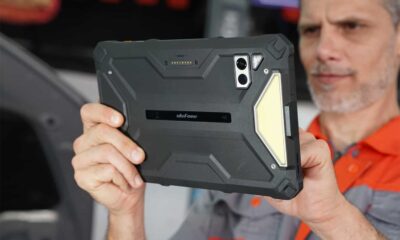
 Technology3 weeks ago
Technology3 weeks agoUlefone Armor Pad 4 Ultra is now available, at a discount
-

 News3 weeks ago
News3 weeks agoReach CEO Jim Mullen: If government advertises with us, we’ll employ more reporters
-
Business3 weeks ago
Maurice Terzini’s insider guide to Sydney
-

 Technology3 weeks ago
Technology3 weeks agoOpenAI secured more billions, but there’s still capital left for other startups
-

 Health & fitness3 weeks ago
Health & fitness3 weeks agoNHS surgeon who couldn’t find his scalpel cut patient’s chest open with the penknife he used to slice up his lunch
-

 Money3 weeks ago
Money3 weeks agoWhy thousands of pensioners WON’T see State Pension rise by full £460 next year
-
Business3 weeks ago
The search for Japan’s ‘lost’ art

You must be logged in to post a comment Login